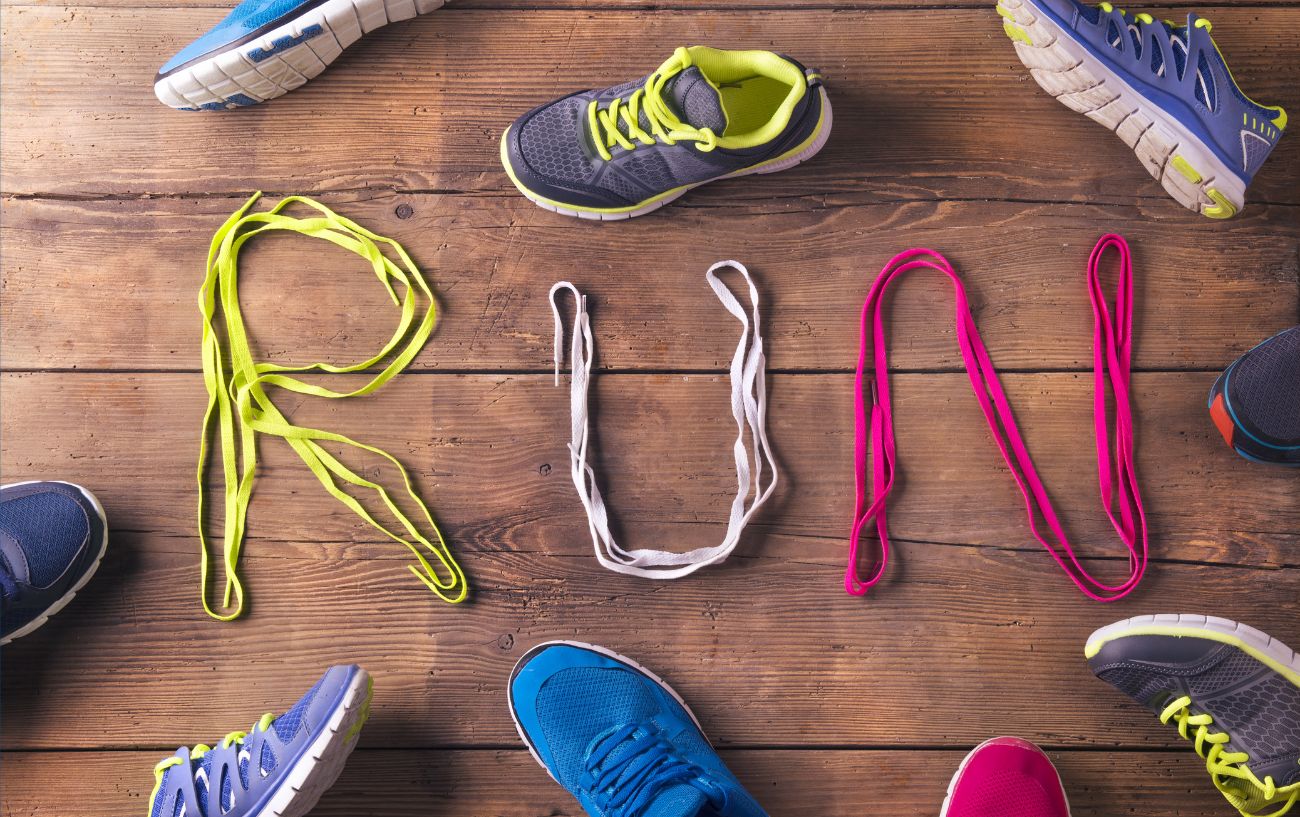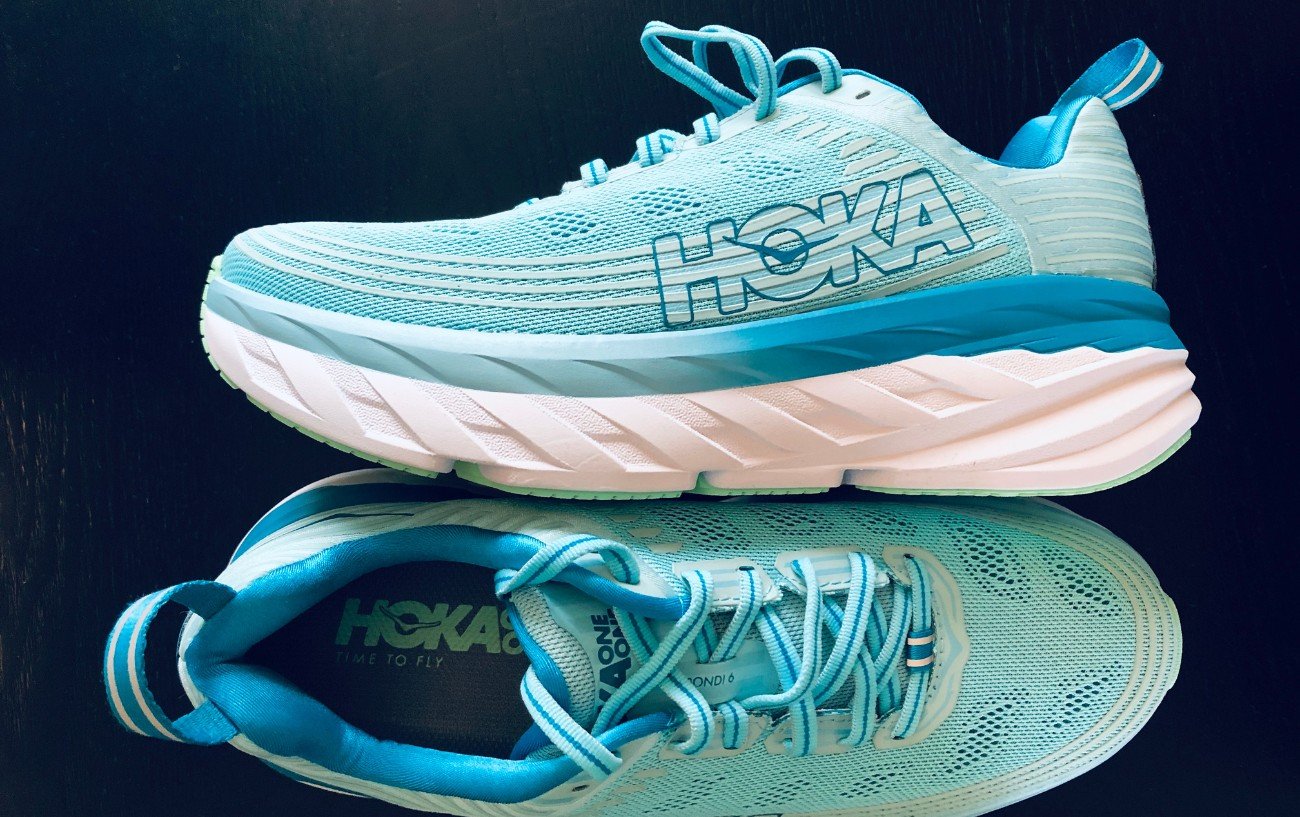When shopping for running shoes, you’ve probably come across terms like “heel-to-toe drop” or just “heel drop.” But what does it actually mean, and why does it seem to matter so much in the world of running?
Spoiler alert: it’s not just another marketing buzzword—it can have a real impact on your running.
The heel-to-toe drop of running shoes, or any type of casual or athletic footwear, refers to the difference in height between the shoe’s heel and forefoot.
Heel drop is a feature that can influence your foot strike and even how your body feels after a long run. Finding the perfect heel-to-toe drop, along with all of the other features of comfortable running shoes, can be the secret ingredient to improving comfort and running performance.
So how do you figure out the right heel drop for you? Well, it depends—on your running style, goals, and even the type of terrain you prefer.
In this guide, we’ll break down what heel drop actually is, why it matters, and how you can find the sweet spot that works best for your unique needs.

What Is Heel to Toe Drop?
Heel-to-toe drop may also be referred to as heel drop, heel-toe drop, toe drop, shoe offset, heel differential, or just shoe drop. It is the difference in height between the shoe’s heel and forefoot.
The heel drop measurement is given in millimeters and usually ranges from about 0 to 15 mm for most running shoes, though most conventional running shoes fall somewhere between the 6 to 13 mm range.
Although there is some variability in the categories of heel-to-toe drop differentials, running shoes are typically divided into four categories based on the heel-drop measurements:
Heel to Toe Drop Categories
- Zero-drop running shoes: 0 mm
- Low-drop running shoes: 1-4 mm
- Mid-drop running shoes: 5–8 mm
- High-drop running shoes: 9 mm or more

The higher the heel to toe drop of the shoe, the greater the difference in thickness or height between the heel portion of the running shoe and the toe or forefoot region.
With a zero drop running shoe, there is no difference in height between the heel of the shoe and the toe. The shoe is completely flat along its entire length.
When comparing a running shoe with a heel drop of 6 mm and a running shoe with a heel drop of 13 mm, the running shoe with the higher heel drop measurement has a bigger difference in the thickness of the sole at the heel than the toe region.
For example, if the drop is 6 mm, the heel thickness is 6 mm more than the thickness of the shoe at the toe.
The toe drop of a shoe measurement does not necessarily mean that the heel or toe portion of the shoe is that number of millimeters off of the ground. Rather, it is merely a number that quantifies the differential in the height of the two ends of the shoe.
There are some potential benefits of zero-drop running shoes and lower-drop shoes.
Zero drop running shoes are said to promote a more natural running stride because they encourage you to land on your midfoot or forefoot, which is more optimal from a biomechanical standpoint.
Because there is less material built up around the heel, the heel of the shoe isn’t necessarily the first part that will land.

Heel Drop vs Heel Stack Height
Heel drop is often confused with stack height.
Although the stack height of a running shoe will affect the heel drop, stack height and heel drop are independent features.
The stack height of a shoe refers to how much material is between your foot and the ground. A running shoe with a large stack height will have thick cushioning, such as a maximalist running shoe, so that your foot is elevated on more of a platform above the ground.
A minimalist running shoe will have virtually no stack height, meaning there is very little material between your feet and the ground.
That said, it is possible to have a shoe with a large stack height and a low heel-to-toe drop.
If the amount of cushioning is relatively uniform from the heel to the toe, the heel-toe differential will be low, but if the shoe is built on a thicker platform, the stack height of the shoe could still be high.
However, barefoot running shoes or minimalist running shoes will typically have a very low stack height and will also be zero or low drop running shoes.
Should I Try Zero Drop Running Shoes?
As with any factor pertinent to running shoes, such as the amount of cushioning or stability provided by the shoe, there is no one-size-fits-all approach to the best heel drop for all runners.
Rather, the ideal heel-to-toe drop for running shoes for your own needs will depend on the following factors:

#1: Experience Level
There are no rules about whether beginners or advanced runners should wear a particular toe-drop running shoe, but beginners are generally most comfortable in a standard heel-drop shoe, which usually falls around 8 to 10 mm.
This is the standard heel drop measurement found in most athletic shoes, and it will feel most familiar on your foot.
However, you are certainly welcome to start right off the bat with zero drop running shoes if that is your preference.
#2: Terrain
Zero-drop or low-drop shoes are particularly common among trail runners.
First of all, when you are running on the trails, the ground is naturally more forgiving than hard asphalt or concrete.
This means that even if you are heel striking or landing closer to the back of your foot, you do not necessarily need as much cushioning under your heel.
With that said, the amount of cushioning under the heel is also influenced by the stack height, so it is possible to have low toe drop running shoes with a high stack height.
One reason trail runners tend to gravitate towards lower heel-drop running shoes is that a lower toe drop and smaller stack height help their feet receive more proprioceptive feedback about the terrain, allowing them to adapt their stride accordingly.
Because trails have uneven surfaces, having greater proprioceptive awareness of how your foot is landing and contacting the ground will help you better navigate the ever-changing terrain and optimize your stride.
It should be noted that most running shoe brands, such as Hoka, Asics, Saucony, Nike, Brooks, and more, offer some form of low—or zero-drop shoe nowadays.

#3: Injury History
If you have a history of certain running injuries, you should consider your injuries when deciding what type of running shoes are best for you.
The heel drop in a running shoe will affect the relative stress on different regions of the foot at impact.1Fuller, J. T., Thewlis, D., Tsiros, M. D., Brown, N. A. T., Hamill, J., & Buckley, J. D. (2019). Longer-term effects of minimalist shoes on running performance, strength and bone density: A 20-week follow-up study. European Journal of Sport Science, 19(3), 402–412. https://doi.org/10.1080/17461391.2018.1505958
Keep in mind that running subjects the body to about 2 to 3 times the force of your body weight upon landing, so the structures of your foot are prone to significant impact stress.2NILSSON, J., & THORSTENSSON, A. (1989). Ground reaction forces at different speeds of human walking and running. Acta Physiologica Scandinavica, 136(2), 217–227. https://doi.org/10.1111/j.1748-1716.1989.tb08655.x
A pair of shoes with a high toe drop measurement will have a thicker heel. These can be ideal for runners with a history of Achilles tendinitis because the high heel height reduces the stretch and strain on the calf muscles and Achilles tendons.
Even though it might be ideal to land closer to your midfoot when you run, if you have a bunion or Morton’s neuroma, you might be more comfortable offloading the highest impact forces when you run.3Perkins, K. P., Hanney, W. J., & Rothschild, C. E. (2014). The Risks and Benefits of Running Barefoot or in Minimalist Shoes. Sports Health: A Multidisciplinary Approach, 6(6), 475–480. https://doi.org/10.1177/1941738114546846
Because impact forces are highest at the moment of ground contact, you might prefer a running shoe with a higher toe drop. The thicker heel of higher-drop shoes will allow you to land more toward the back of your foot.
Again, although biomechanists and running experts would discourage a heel-striking pattern from both a running economy and injury rate standpoint, the vast majority of runners are heel strikers.

For example, a study examining the running foot strike patterns of 936 recreational distance runners at the 10 km point of a half-marathon/marathon road race found that 88.9% of the runners were heel strikers, 3.4% were midfoot strikers, 1.8% were forefoot strikers, and 5.9% of runners exhibited notable foot strike asymmetry.4Larson, P., Higgins, E., Kaminski, J., Decker, T., Preble, J., Lyons, D., McIntyre, K., & Normile, A. (2011). Foot strike patterns of recreational and sub-elite runners in a long-distance road race. Journal of Sports Sciences, 29(15), 1665–1673. https://doi.org/10.1080/02640414.2011.610347
Plus, although heel striking tends to reduce forward velocity and momentum by placing a braking force into the stride, there is some evidence to suggest that for recreational runners, heel striking can actually improve running economy.5OGUETA-ALDAY, A., RODRÍGUEZ-MARROYO, J. A., & GARCÍA-LÓPEZ, J. (2014). Rearfoot Striking Runners Are More Economical Than Midfoot Strikers. Medicine & Science in Sports & Exercise, 46(3), 580–585. https://doi.org/10.1249/mss.0000000000000139
As a general guideline, if you are not interested in spending a lot of time trying to change your running stride, you will be better served to stick with a conventional running shoe with a standard heel drop that helps attenuate impact forces when you land on your heel.
Unilaterally deciding to switch to zero-drop running shoes because they are “better“ and you “should” be landing with a midfoot strike will only increase the risk of injury if you can’t actually change your running stride.
It can also be a good idea to include both conventional heel drop and low or zero drop shoes in your rotation to decrease injury risk.6Malisoux, L., Ramesh, J., Mann, R., Seil, R., Urhausen, A., & Theisen, D. (2013). Can parallel use of different running shoes decrease running-related injury risk? Scandinavian Journal of Medicine & Science in Sports, 25(1), 110–115. https://doi.org/10.1111/sms.12154
Check out our guide to learn more about rotating your running shoes to decrease your risk of injury:












